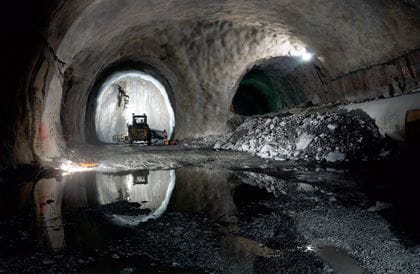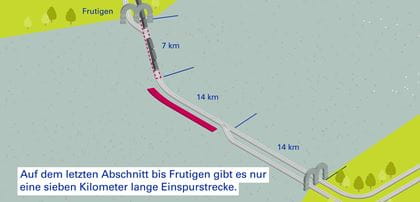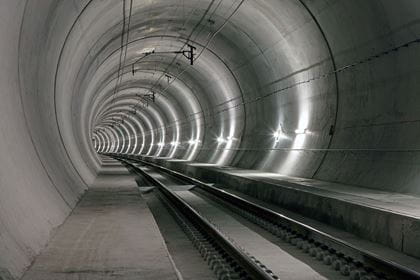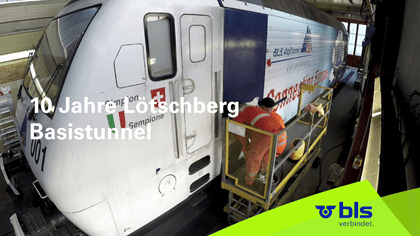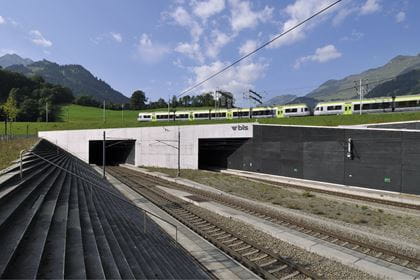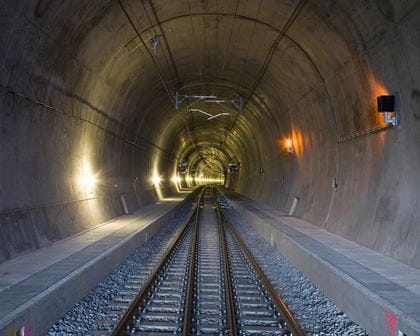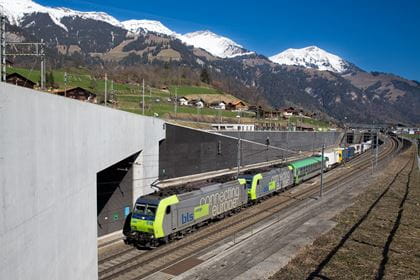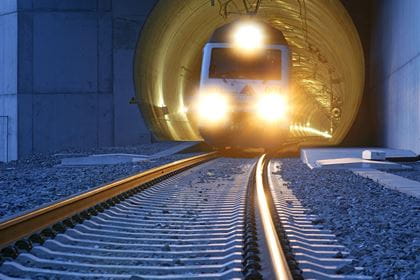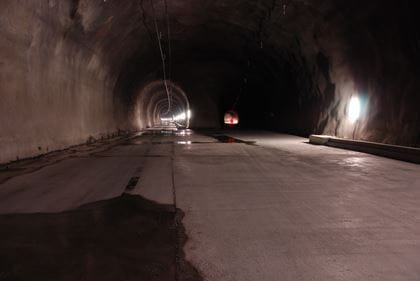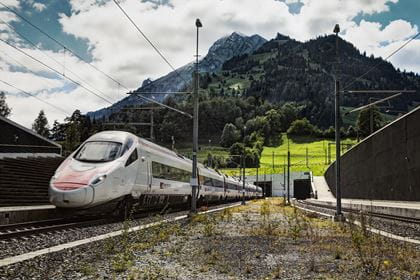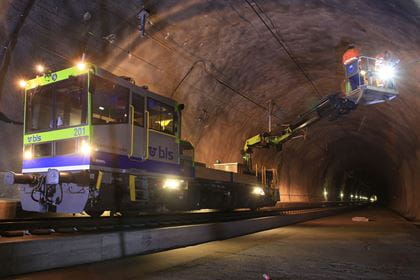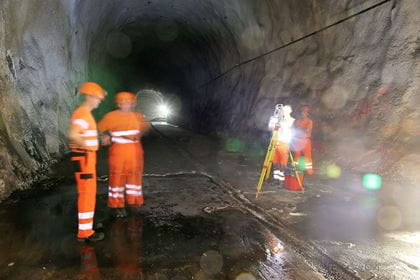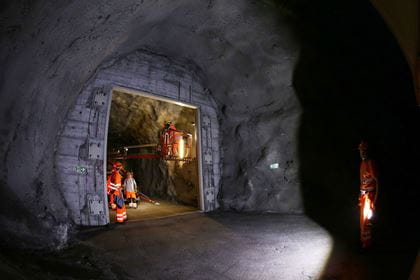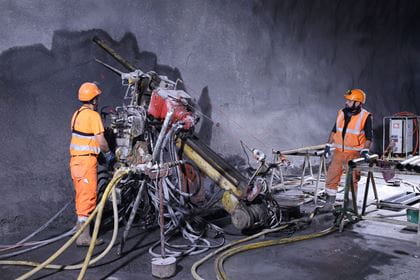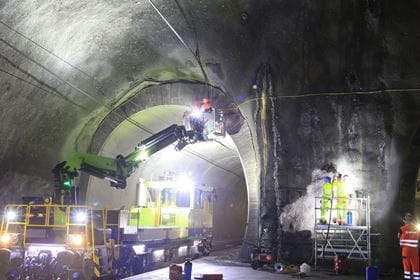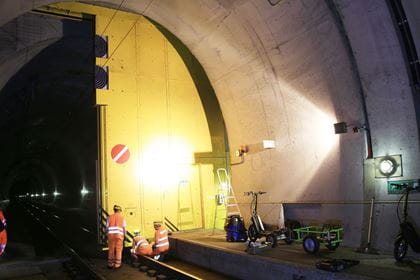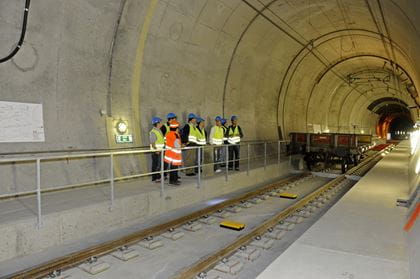Age verification
BLS is upgrading the Lötschberg Base Tunnel
The Lötschberg Base Tunnel is the centrepiece of the BLS infrastructure and a central element of the NRLA, the New Rail Link through the Alps. However, the Lötschberg Base Tunnel is also a bottleneck because two thirds of the tunnel can only be accessed via one rail tube. At the beginning of 2024, BLS got the green light to expand the full length of the tunnel to two tubes. This will finally complete the construction.
Since the Lötschberg Base Tunnel was first commissioned in 2007, it has been impossible to imagine Swiss transport infrastructure without it. The tunnel has shortened the journey from the Central Plateau to Valais, and freight trains no longer have to traverse the energy-intensive mountain route. The catch here is that only around a third of the current tunnel has two passable tubes. Now BLS is creating more capacity for passenger and freight transport by expanding the tunnel to comprise two rail tubes along its entire length, and is thus eliminating the bottleneck.
7 kilometres of rock to Frutigen
The Lötschberg Base Tunnel is now on the cusp of full capacity. More and more passenger and freight trains are travelling through the approximately 35 kilometre-long tunnel, but only 14 kilometres of the Base Tunnel currently has twin tracks. A second 14-kilometre tunnel tube has indeed been cut, but it has not yet been equipped for railway operation. A further seven kilometres are still to be cut through, so that trains can travel continuously through the tunnel on two tracks
The tunnel will finally be completed
The Federal Parliament wants to upgrade the Lötschberg Base Tunnel to encompass two rail tubes throughout. This was decided as part of the Strategic Expansion Programme (STEP) for rail infrastructure, and the decision eliminates the need to plan a so-called partial upgrade, which Parliament originally commissioned BLS to do in 2019. In a partial upgrade, only the existing, 14-kilometre-long unfinished tunnel bore between Ferden and Mitholz was to be equipped with railway technology, while the remaining seven kilometres between Mitholz and Frutigen would still only have been connected by one tunnel tube.
Double track brings many benefits
The expansion of the Lötschberg Base Tunnel will make it possible to operate a half-hourly service for long-distance transport between the Cantons of Bern and Valais. The full-length expansion to two tubes offers further advantages over a partial upgrade, too, since the latter would have required the Base Tunnel to be completely closed for construction work over a period of eight months. For a full-length expanded twin-track route, meanwhile, the tunnel can also stay open to traffic at all times during the construction period, which avoids a negative economic impact. The full upgrade will increase timetable reliability and flexibility throughout the entire Swiss rail network. At the same time, greater capacity makes the Lötschberg axis more attractive for freight transport, which helps to drive the shift from road to rail. The direct full upgrade is also cheaper than the phased expansion and costs taxpayers less in the long term.
Key information
- Start of construction: 2026
- Forecasted costs for full upgrade: CHF 1.7 billion (excluding VAT and inflation, price base 2014)
Media releases
- 13.06.2022 BLS erhält Plangenehmigungsverfügung für den Teilausbau
- 11.08.2020 Planungen für Ausbau des Lötschberg-Basistunnels gehen in nächste Runde
- 23.06.2017 Der Lötschberg-Basistunnel gehört fertig gestellt
- 15.06.2017 10 Jahre Vollbetrieb des Lötschberg-Basistunnels
- 29.01.2016 Doppelspurausbau NEAT Lötschberg-Basistunnel
- 17.08.2015 Doppelspurausbau NEAT Lötschberg-Basistunnel
Brochures & further information
- 3 MB NRLA Lötschberg brochure
- 400 KB Lötschberg Base Tunnel 10 years in operation – now we’re extending the tunnel
- Alptransit Portal Discover the New Rail Link through the Alps and its history
